CARMARTHEN BAY POWER STATION
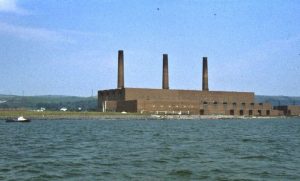
The need for a big power station in South Wales came about following the end of World War II and the increase demand for electricity in the surrounding area. The Carmarthen Bay Power Station Co. Ltd. was set up to build a large power station in Burry Port due to suitable rock foundation, plentiful supply of sea water for cooling purposes, plentiful supply of coal from the Gwendraeth Valley and a local work force.
Work began on the cutting of the first sod in 1947 by Councillor F.J. Morgan of Burry Port Urban District Council with the support of local people and school children. Building work began with the clatter of the “pile drivers” and the building of the three large Boiler Houses, associated Turbine Room and Control Room. The vast building was a local landmark and was soon for miles around. It took 11,500,000 bricks and was reportedly to be the largest brick built building in Wales, and in size and general appearance looked like Battersea Power Station in London.
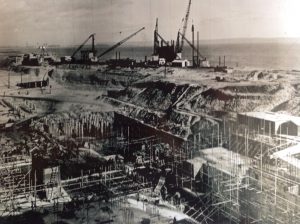
The 15 boilers were built by Balfour Beatty and the six turbines by Metropolitan Vickers. So vast was the construction of the power station that the logistics of transporting the large turbines from Manchester to Burry Port necessitated one side of a street in Brecon being demolished to enable the huge heavy vehicles to come through the mid Wales town.
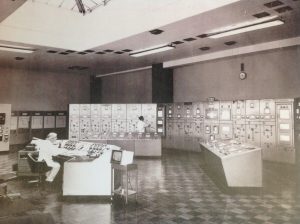
When fully commissioned the six turbines were able to generate 345 Megawatts of electricity which would comfortably supply the surrounding area to include Carmarthen and Swansea. When at its peak efficiency it would run 24 hours a day and in the latter days it would only run at peak demand times. When running 24 hours a day staff would regularly accumulate 108 hours pay per week.
The power station was a large employer in the area and there were many family groups working at the power station. There were many power station romances and subsequent marriages. The only female apprentice married one of her male counterparts. There was a strong Sports and Social club which was supported by the power station and each year the
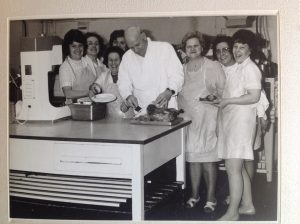
highlight was the annual Open Day. People would come from far and wide to join in the fun of the Open Days which included train rides in the GWR guards van along the 10 miles of track within the site. Another popular attraction were the go-cart races around the main perimeter road. The power station was so community orientated that the canteen provided the meals for the Pembrey and Burry Port “meals on wheels” service. The main canteen would annually provide space for those that were prepared to be blood donors, and support Give blood.
In July 1968 there were eight Councillors working at the power station, so much so was the community spirit. The vast majority of Burry Port Male Voice Choir members worked at the power station, and included the Conductor, the Chairman, the Treasurer and the Secretary.
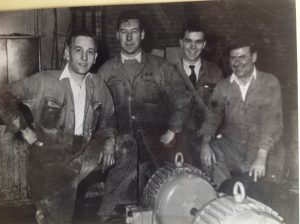
The power station was only designed to last for some 25 years but the end came after 30 years 4 months and 3 days! The announcement was made in the canteen that a closure date had been set and all the staff were assured an alternative job in the power industry, or 12 months financial support if a new career was envisaged.
I shadowed the Booking Clerk in Llanelli station for 12 months, paid for by the power station, and then opened Pembrey Travel on the railway platform in Burry Port. Following the closure and demolition of the power station I organised a Car Bay Golden Years celebration on the 4th Sep 2004 to celebrate the 50th anniversary of the commissioning of the first turbine. The event was well attended and one who worked on the construction of the power station (Bob Carter) travelled from New Zealand to be with us. The highlight of the event was the unveiling of a commemorative stone which depicted the outline of the power station and indicated the anniversary dates. The stone can be seen on the Millennium Coastal Path, not far from where the Control Room once stood. The stone is dedicated to those who worked at the power station and those who are no longer with us having suffered devastating illnesses as a result of working at the power station, and the exposure to asbestos particles.
The power satiation was often referred to as “Car Bay” or “The Bay” but sometimes the full title Carmarthen Bay. This often resulted in confusion with the Carmarthen Bay Holiday Village being so close in Kidwelly!
EMYR PHILLIPS August 2019
